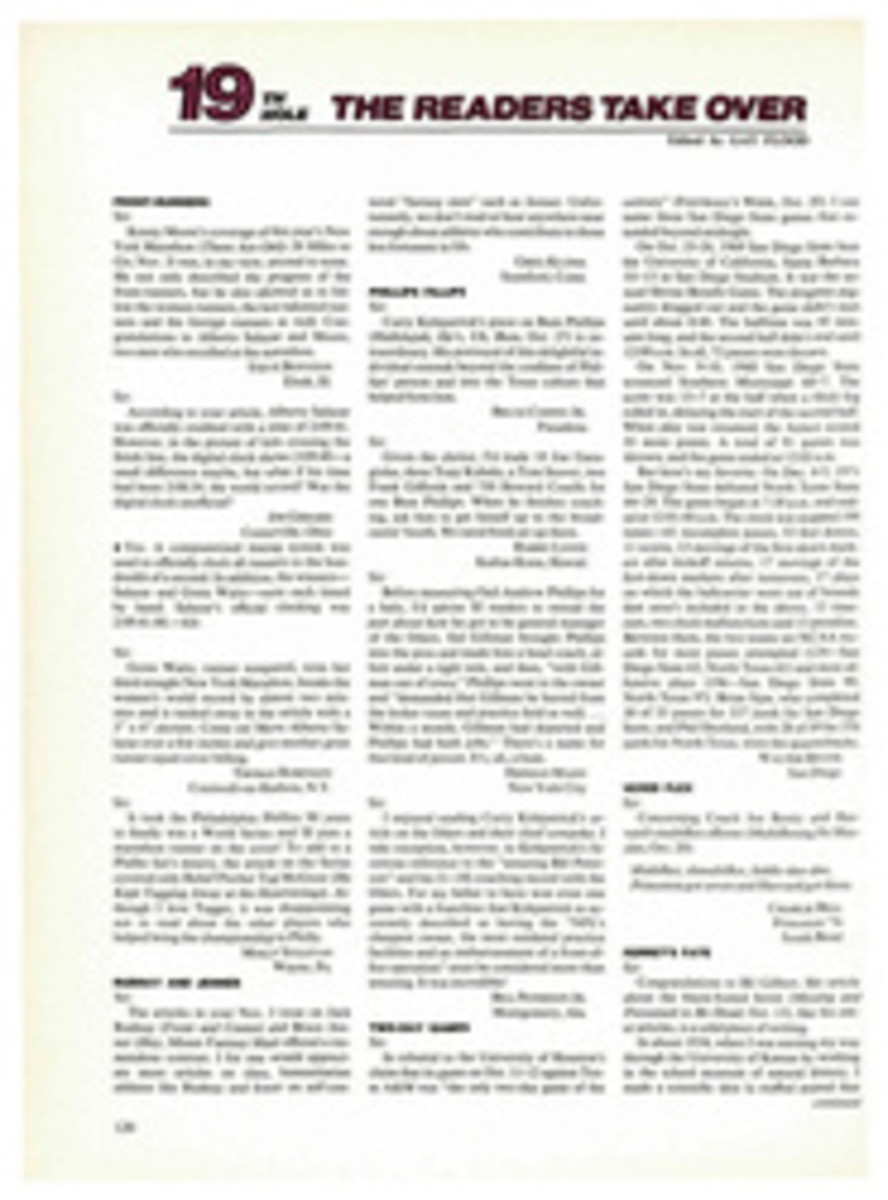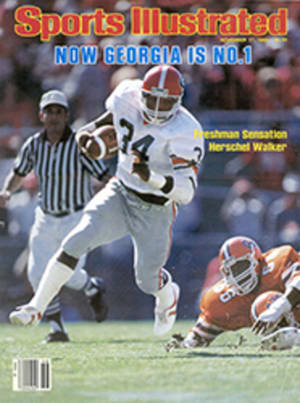
CROSS-COUNTRY SKIING AT NIGHT WAS A FROLIC—UNTIL THE COYOTES ARRIVED
It was a cold spell in early January, and my wife, Hilde, and I had decided to make use of the full moon to take a late-night cross-country ski tour. The drive up through the Cascade Mountains on well-cleared roads was easy, and half an hour after leaving home we were ready to ski.
The sport has many attractions, with quiet beauty perhaps the most obvious among them. A few hours in the winter woods is more potent medicine for psychic ills than anything a doctor could prescribe. Cross-country skiing is also reputed to be one of the most perfect forms of physical exercise ever devised. The legs are used without the pounding that goes with running, the arms and shoulders work hard, too, and each deep breath is of unpolluted air.
We had our skis ready in minutes. There are about half a dozen waxes that are useful to cross-country skiers, and they range in color and texture from a mess called klister that may be red, purple or blue and squeezes out of a tube, to the hardest waxes, which are usually colored blue and green. The general rule is that harder wax is for colder snow. Of course, there are modern fiberglass skis that need no waxing. But our wooden models are old and well cared for—almost antiques—and for me they are to cross-country skiing what split-cane fly rods are to fishing. When it comes to a sport that involves direct contact with nature, if there's a choice about equipment, I'll use wood instead of synthetic materials every time. And the relationship between skiing and fishing is real—it's pleasant to know that the snow you ski on in January will melt into the river you fish in June.
This was green-wax weather—the temperature well down into the teens—and even up-hill there was plenty of glide through the powdery snow. From where we had parked it was 100 yards up a logging road to a narrow break in the fir trees. The road curves through the break, then starts a downhill run of about a mile. Logging has certainly done a great deal of harm to Western forests, and other than the obvious economic considerations, I know of only two certain benefits that have derived from the harvest of millions of trees. One is that populations of grouse thrive in areas where the Douglas firs have been clear-cut; the other is that logging roads make perfect cross-country ski trails.
I led the way on the downhill run, just to be sure that no trees or large limbs had fallen across the road since our last trip. The skiing was as good as I'd hoped for, even better. The bright, cold moon in the eastern sky gave plenty of light. Under the new layer of powder the frozen base was as hard as iron, which made for speed, and the three fresh inches on top made turning under control at least a possibility. Cross-country ski bindings clamp the toes of your boots down, but the heels are free, so turning is always something of a challenge when you're traveling at any kind of speed. But this night even I could manage. I'm not a good skier, don't even want to be, having never taken a lesson or read a book on the subject. If you ski a while you learn to get where you want to go, and that is sufficient for me. There's no one around to show off for. The form-and fashion-conscious downhill skiers are in another world, far away.
Cross-country skis through powder snow make a lovely, muted hissing sound. That was all I heard as I gradually picked up speed down the slope, the trees dark blurs on either side, the road itself perfectly smooth and glowing white and, at night, strangely without dimension in the moonlight. About halfway down, where the run is steepest, is a very sharp left-hand turn, but it's steeply banked. Crouching low, leaning left, I negotiated it. The rest of the way to the bottom was easy, and, out of the turn, I relaxed to glide the last half mile.
That was when the first coyote howled. Soon a second, then a third joined in. Then there were more. Perhaps it was the sound of skis through snow that made it happen, or it could have been the full moon.
When I reached the meadow at the bottom of the road, Hilde was close behind me. The coyotes sounded very near, and she was frightened. So was I, but I didn't want to admit it. I explained to her that they couldn't possibly be as near as they seemed and that three or four coyotes can easily sound like a dozen or more.
One would bark, then yip a few times in rapid succession, then start a long drawn-out howl that seemed to last at least 20 seconds, the note rising shrilly as the volume increased. The louder the howl became, the closer it seemed, and when the animals joined in chorus they sounded as near as 80 or 100 yards.
I let Hilde take the lead. We kept on skiing because the route was familiar to us, and the pack of coyotes followed along. We crossed the meadow to an old homestead cabin, its roof long ago caved in, snow in drifts against the weathered logs to window level, glowing smooth and almost blue in the moonlight. Beyond the cabin a narrow creek cuts across the meadow, and when we crossed the creek we heard the water flowing far down beneath the ice and snow. Just past the creek, where a gold mine is cut into a north-facing slope, we hit another logging road and followed it south, climbing again.
The coyotes stayed behind us, howling singly, then in chorus, seldom silent for more than a few seconds at a time. We looked back often enough, but of course we never saw one.
The road curves two miles up through Douglas fir to a bowl that offers ideal skiing over smooth low slopes of virgin powder. We were wearing only light shirts under nylon Windbreakers, and the temperature was at least 15° below freezing, but the hard uphill skiing had us sweating by the time we reached the bowl.
And at some point during the exertion of that climb we forgot to be frightened. Or perhaps it would be better to say that we remembered that we knew better. The coyote, whether alone or in company, often performs a nocturnal serenade consisting of barks, yaps and a whine that escalates into a howl. To my knowledge, there are no recorded instances of coyotes attacking humans. I reminded Hilde that the coyotes we often saw on our daytime hikes had shown us only cautious curiosity. They were every bit as shy as deer. So it wasn't really a threatening sound behind us. We had always loved coyotes, and we listened to them now for half an hour as we skied the bowl, traversing the slopes, cutting zig-zag patterns from top to bottom at moderate speed.
Then we split a candy bar and started the three-mile trip back. Soon we realized that the pack had either waited in the woods for us to pass, or had made a loop to get behind us again.
We skied hard to the car to stay warm, and the coyotes were with us all the way. It wasn't until the skis were lashed to the roof rack that they finally fell silent. We drank some hot coffee from a thermos, with a little bourbon in it, then ate dried fruit from a plastic bag. Even though the temperature had dropped another 5°, we were reluctant to leave. Shivering, we stood beside the car for a minute or two. Far off a lone coyote howled, and another answered. No sound on earth could be wilder, freer, lovelier than what we heard that January night. Now, whenever conditions are right for it—full moon, clear sky and new powder snow—we ski at night, and we have heard coyotes often, though never so near.
Although Hilde and I are the legal owners of no land other than the lot our house sits on, we have already skied with a sense of ownership as strong as if the mountains had been deeded to us. On daytime trips, once we are well off the road, we feel that the places we ski are ours. Of course, this sense of ownership is an illusion. Coyotes really own the mountains—they have been in North America for a million years and likely will remain after we have gone—and on moonlit winter nights when they howl, the fact that we are only guests seems very clear, and quite appropriate.

